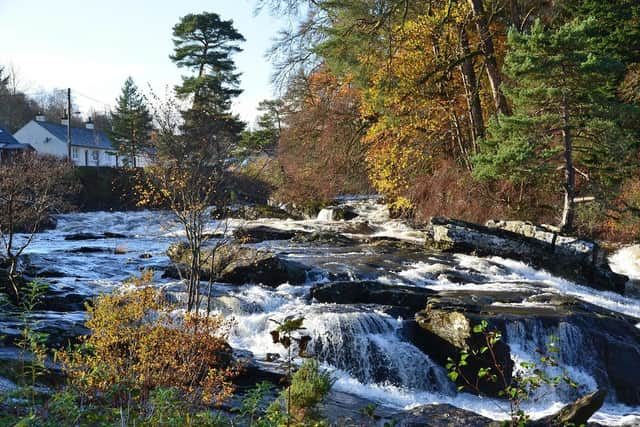The Scottish village that celebrated Halloween on November 11
Residents of Killin in The Trossachs observed the festival according to the old Julian calendar, which was broadly disbanded by the rest of Britain in 1752.
An interview with villager William Walker about the now-faded tradition was made by the School of Scottish Studies at Edinburgh University back in 1964.
Advertisement
Hide AdAdvertisement
Hide AdMr Walker said November 11 was the day Halloween was marked in Killin until World War One.


He described November 11 as the “old heathen” date for the celebration.
Mr Walker said that children spent a week collecting material for a bonfire which was lit on a hill, Carn Na Bonnach, outside the village on Halloween night.
He said: “Then there was a great deal of play at night, a great deal of mischief done.”
Boys would turn their jackets inside out and guisers went from house to house singing 'Here Come I Galoshin'. Money or scones were handed out.
Mr Walker said: “They went round on a commercial basis! It was quite amusing to get the guisers in.”
A night wore on, the horseplay intensified. Kail stalks were taken from gardens with gates and pieces of wall moved from back gardens and left up to a mile away.
The recording of Mr Walker is held by the Tobar an Dualchais/Kist o Riches archive which preserves several thousand hours of Gaelic and Scots recordings.
Advertisement
Hide AdAdvertisement
Hide AdThe Julian (Old Style) calendar long continued to be used for traditional festivals in Scotland, with it still observed in some cases.
Since the leap year in 1900, residents of Foula in Shetland mark Christmas on January 6 and New Year’s Day on January 13.
Meanwhile, residents of Kilmarnock in East Ayrshire, keep their own time. They observe Halloween on the last Friday of October, no matter the date, in a celebration known as Killieween.
It is believed the Killieween tradition was rooted in the town’s industrial past, when payday fell on the last Friday of the month.